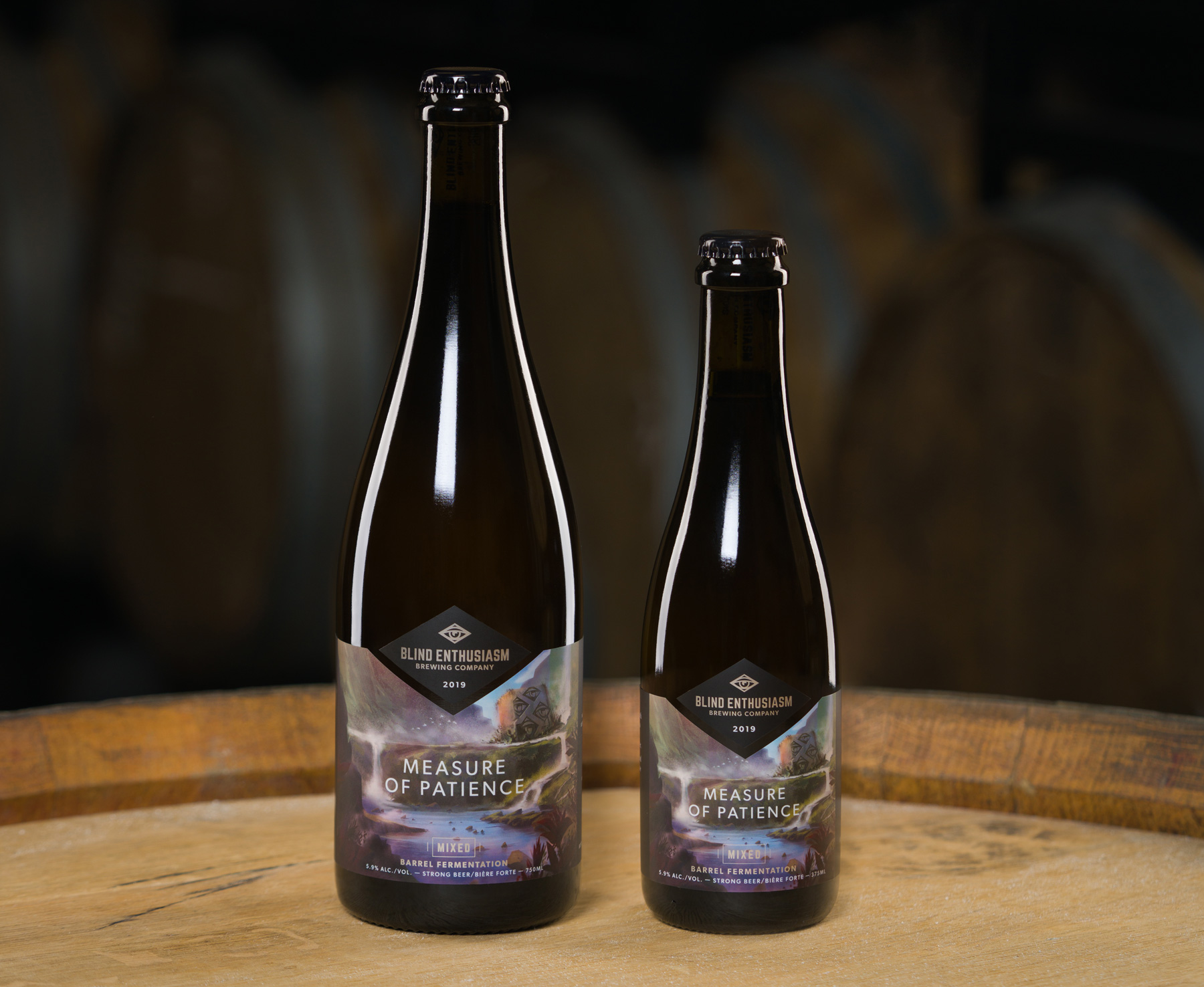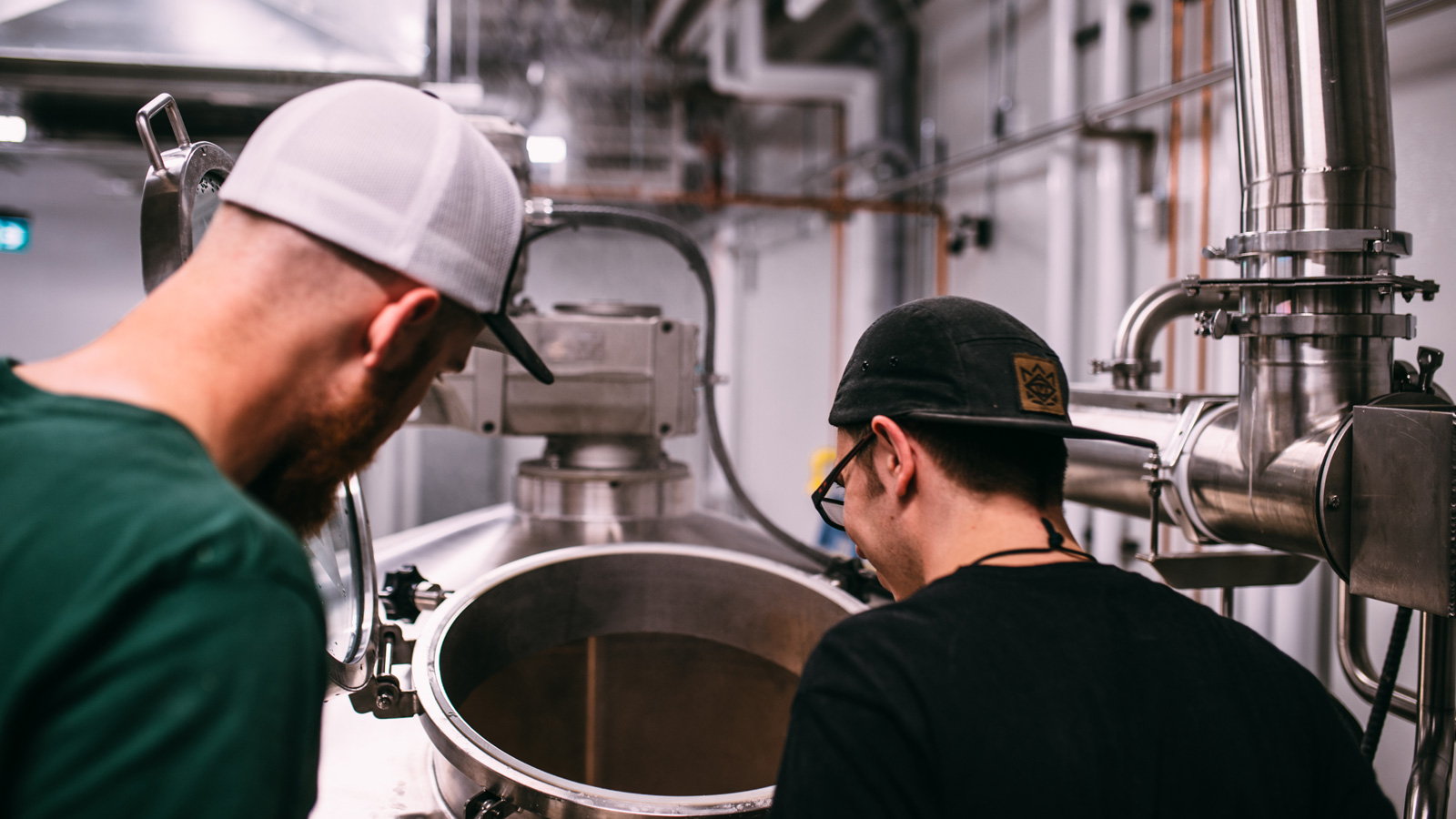
One of our goals when we established Blind Enthusiasm was to create high-quality barrel-fermented beers using a variety of techniques and methods. We didn’t know that it would take us nearly five years from the start of the project to the release of Measure of Patience, our first beer from The Monolith. It took a long time and the successful navigation of many challenges to get to this point, but, when we taste the beer, it is all worthwhile.
Measure of Patience is a mixed-fermentation beer, meaning that we pitched a variety of microorganisms (both yeast and bacteria) into cooled wort that was then put into barrels for fermentation. We used 375 litre Marsala barrels imported from Sicily for the first round of mixed-fermentation batches. Barrels and prior contents can add some inherent character, as well as being a perfect vessel for long fermentations due to the shape, and the porosity of the oak. The wort itself is noteworthy as we use a turbid mashing technique that creates a nutrient rich, proteinaceous, and complex carbohydrate wort that promotes a slower fermentation that favours the use of multiple different microorganisms and the development of a complex flavour profile.

After at least a year, when fermentation has slowed or stopped and the barrels have developed positive characteristics, we taste each barrel and then blend a select few to achieve a desired flavour profile. We have a decent inventory of barrels to choose from, so we have moderate flexibility on what we create. When blending, one can have a target in mind, or evaluate the barrels and blend in a way that will best highlight the characteristics of certain barrels. In the case of Measure of Patience, we wanted to create a beer that was very balanced with light fruit character and medium-light acidity, so we chose barrels accordingly. The goal was for Measure of Patience to satisfy and impress people that have tried a range of mixed fermentation beers, while being a balanced beer that would not be overpowering in any way for people new to these beers. We’re happy to report that we think we met that mark.

To celebrate this big milestone, we’re going to release the beer on Sunday, December 15th. Given that The Monolith Taproom isn’t open yet we’re releasing it at the Ritchie Market, with bottles-to-go (and small glass pours) available in the Bottle Room, and multiple pour sizes and bottle service at in our restaurant Biera. To celebrate the occasion, Chef Christine will be creating some special food pairings. Get more event details here.
One last thing to note is that we expect this beer to age well for up to 10 years. If you are planning on aging the beer we recommend using the 750ml bottles as they tend to age better than the smaller format 375ml bottles. To promote the best conditions for aging we used a crown cap and cork method to ensure stability of the package over the long term. It’s also important you age these beers on their side as that maintains hydration of the cork. If temperature control is available, we recommend a temperature of 10-12°C.
The live microorganisms in the bottle promote flavour development and long-term stability of the beer, but, can create some challenges for serving the beer. These organisms will create a sediment layer on the bottom of the bottle when stored on its side (also referred to as lees). When you are pouring the beer be careful not to disturb the sediment as it is undesirable. The sediment is fine to consume, but it will subdue some of the flavours of the otherwise bright and fruity beer and can add an undesirable texture. For best pouring results we recommend one maintain the storage angle of the bottle to reduce the amount disturbance of the sediment during the pour. Avoid tilting the bottle upright between pours as this will mix in the lees. In our restaurant we use a special tray to hold the bottle at an angle from opening to completion of the bottle to keep the sediment in the bottle. When you pour out the very final contents from the beer using this method (the last 25mL), you will see the difference.
That’s all we’ve got to say about Measure of Patience. It’s been a labour of love, and we’re really happy with how it has turned out.
Enjoy!

